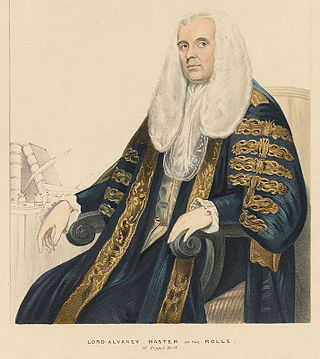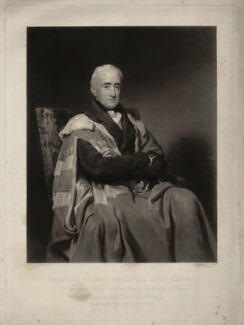The Peerage of Ireland consists of those titles of nobility created by the English monarchs in their capacity as Lord or King of Ireland, or later by monarchs of the United Kingdom of Great Britain and Ireland. It is one of the five divisions of Peerages in the United Kingdom. The creation of such titles came to an end in the 19th century. The ranks of the Irish peerage are duke, marquess, earl, viscount and baron. As of 2016, there were 135 titles in the Peerage of Ireland extant: two dukedoms, ten marquessates, 43 earldoms, 28 viscountcies, and 52 baronies. However, these titles have no official recognition in the Republic of Ireland, with Article 40.2 of the Constitution of Ireland forbidding the state conferring titles of nobility and stating that an Irish citizen may not accept titles of nobility or honour except with the prior approval of the Irish government.

Earl of Egmont was a title in the Peerage of Ireland, created in 1733 for John Perceval, 1st Viscount Perceval. It became extinct with the death of the twelfth earl in 2011.

Earl of Onslow, of Onslow in the County of Shropshire and of Clandon Park in the County of Surrey is a title in the Peerage of the United Kingdom. It was created in 1801 for George Onslow, 4th Baron Onslow.

Earl of Wilton, of Wilton Castle in the County of Herefordshire, is a title in the Peerage of the United Kingdom. It was created in 1801 for Thomas Egerton, 1st Baron Grey de Wilton, along with the subsidiary title of Viscount Grey de Wilton, also in the Peerage of the United Kingdom. Both titles were created with remainder to the second and all younger sons successively of his daughter Eleanor, wife of Robert Grosvenor, 1st Marquess of Westminster.

Earl Nelson, of Trafalgar and of Merton in the County of Surrey, is a title in the Peerage of the United Kingdom. It was created on 20 November 1805 for the Rev. William Nelson, 2nd Baron Nelson, one month after the death of his younger brother Vice-Admiral Horatio Nelson, 1st Viscount Nelson, the famous naval hero of the Napoleonic Wars and victor of the Battle of Trafalgar of 21 October 1805. The title is extant, the present holder being Simon Nelson, 10th Earl Nelson, who has an heir apparent. The family seat of Trafalgar House in Wiltshire was sold in 1948 by Edward Nelson, 5th Earl Nelson.
Baron Norton, of Norton-on-the-Moors in the County of Stafford, is a title in the Peerage of the United Kingdom. It was created in 1878 for the Conservative politician and former President of the Board of Trade, Sir Charles Adderley. He was succeeded by his elder son, the second Baron. Two of his sons, the third and fourth Baron, both succeeded in the title. On the latter's death in 1944, the title passed to his eighty-nine-year-old uncle, the fifth Baron.

Baron Milford is a title that has been created three times, once in the Peerage of Ireland and twice in the Peerage of the United Kingdom. All three creations have been for members of the same family. The first creation came in the Peerage of Ireland in 1776 when Sir Richard Philipps, 7th Baronet, of Picton Castle was made Baron Milford. However, this title became extinct on his death in 1823, while the baronetcy was passed on to a distant relative. The title was revived in the Peerage of the United Kingdom in 1847 when Sir Richard Philipps, 1st Baronet, of Picton Castle was created Baron Milford, of Picton Castle in the County of Pembroke. Born Richard Bulkeley Philipps Grant, he was the son of John Grant and Mary Philippa Artemisia, daughter of James Child and Mary Philippa Artemisia, daughter of Bulkeley Philipps, uncle of the first Baron of the first creation. He succeeded to the Philipps estates in 1823 and assumed the surname of Philipps the same year. In 1828 he was created a Baronet, of Picton Castle in the County of Pembroke, in the Baronetage of the United Kingdom. However, Lord Milford was childless and the titles became extinct on his death in 1857. He devised his estates to his half-brother Reverend James Henry Alexander Gwyther, who assumed the surname of Philipps. James's daughter Mary Philippa married Charles Edward Gregg Fisher, who assumed the surname of Philipps and was created a Baronet, of Picton, in 1887.

William Henry Vane, 1st Duke of Cleveland, KG, styled Viscount Barnard until 1792 and known as The Earl of Darlington between 1792 and 1827 and as The Marquess of Cleveland between 1827 and 1833, was a British landowner, slave holder and politician.

The Arden family is an English gentry family that can be traced back in the male line back to Anglo-Saxon landholders who managed to maintain status after the 1066 invasion of England by the Normans of France.

Baron Ebury, of Ebury Manor in the County of Middlesex, is a title in the Peerage of the United Kingdom that dates from 1857. In 1999, it became a subsidiary title of the earldom of Wilton after the 6th Baron Ebury inherited the earldom from his distant cousin, the 7th Earl of Wilton.

Richard Pepper Arden, 1st Baron Alvanley was a British barrister and Whig politician, who served as the Chief Justice of the Court of Common Pleas. He was a Member of Parliament from 1783 to 1801.

Joshua William Allen, 6th Viscount Allen MA, was an Irish peer and dandy.

William Arden, 2nd Baron Alvanley was a British Army officer, peer and socialite, who was a friend of Beau Brummell and one of a close circle of young men surrounding the Prince Regent.

St John the Evangelist's Church is in the village of Alvanley, Cheshire, England. It is an active Anglican parish church in the diocese of Chester, the archdeaconry of Chester and the deanery of Frodsham. Its benefice is united with that of St John the Evangelist, Manley. The church is recorded in the National Heritage List for England as a designated Grade II listed building. It is described by the authors of the Buildings of England series as "a building of some character".
Arden is a unisex given name and an English surname of locational origin. It is derived from three places thus called in the United Kingdom: in Yorkshire North Riding, Cheshire, or the Forest of Arden in Warwickshire. This last Arden family from Warwickshire is one of only three that can trace their ancestry back to before 1066.

Charles George Perceval, 2nd Baron Arden PC FRS was a British politician.

Lieutenant-Colonel Richard Pepper Arden, 3rd Baron Alvanley was a British Army officer and peer.

Richard Bulkeley Philipps Philipps, 1st Baron Milford, known as Richard Grant until 1823 and as Sir Richard Philipps, Bt, from 1828 to 1847, was a Welsh landowner and Whig politician.
Richard Arden may refer to:












